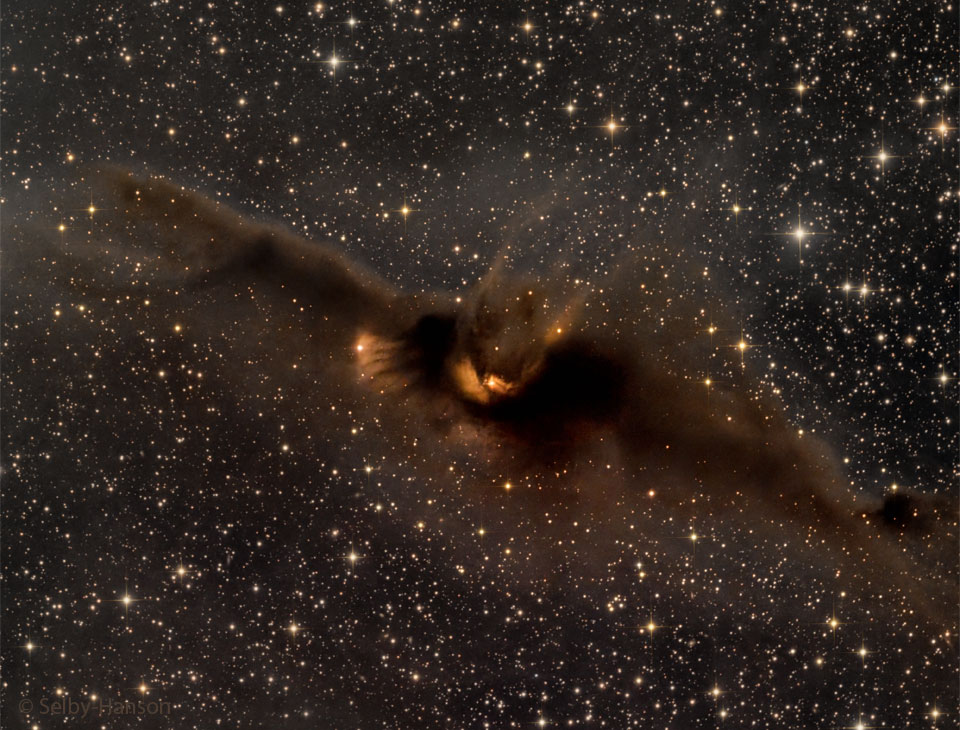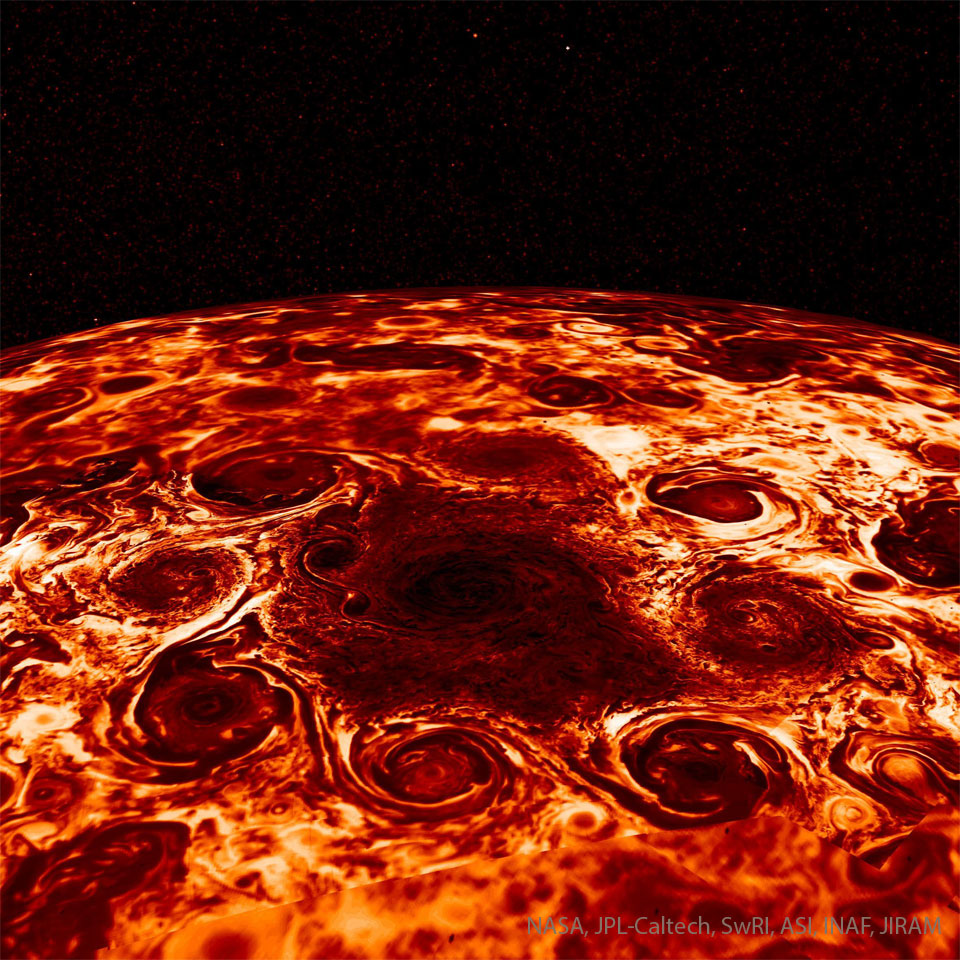Nombre total de pages vues
10/03/2025
ARCHEOLOGIE - Toutânkhamon, chassant au harpon
SANTé/MEDECINE - Le râle agonique - Un processus naturel
ASTRONOMY - NGC 1499: The California Nebula
2025 March 10
Image Credit & Copyright: Toni Fabiani Mendez
Explanation: Could Queen Calafia's mythical island exist in space? Perhaps not, but by chance the outline of this molecular space cloud echoes the outline of the state of California, USA. Our Sun has its home within the Milky Way's Orion Arm, only about 1,000 light-years from the California Nebula. Also known as NGC 1499, the classic emission nebula is around 100 light-years long. On the featured image, the most prominent glow of the California Nebula is the red light characteristic of hydrogen atoms recombining with long lost electrons, stripped away (ionized) by energetic starlight. The star most likely providing the energetic starlight that ionizes much of the nebular gas is the bright, hot, bluish Xi Persei just to the right of the nebula. A regular target for astrophotographers, the California Nebula can be spotted with a wide-field telescope under a dark sky toward the constellation of Perseus, not far from the Pleiades.
09/03/2025
SANTé/MEDECINE - Le râle agonique - Ce que les proches doivent savoir
ASTRONOMY - Cyclones at Jupiter's North Pole
2025 March 9
Image Credit: NASA, JPL-Caltech, SwRI, ASI, INAF, JIRAM
Explanation: Why are there so many cyclones around the north pole of Jupiter? The topic is still being researched. NASA's robotic Juno mission orbiting Jupiter took data in 2018 that was used to construct this stunning view of the curious cyclones at Jupiter's north pole. Measuring the thermal emission from Jovian cloud tops, the infrared observations are not restricted to the hemisphere illuminated by sunlight. They reveal eight cyclonic features that surround a cyclone about 4,000 kilometers in diameter, just offset from the giant planet's geographic north pole. Similar data show a cyclone at the Jovian south pole with five circumpolar cyclones. The south pole cyclones are slightly larger than their northern cousins. Oddly, data from the once Saturn-orbiting Cassini mission has shown that Saturn's north and south poles each have only a single cyclonic storm system.
08/03/2025
ASTRONOMIE - Collision de deux galaxies
ASTRONOMY - Galaxies in Space
2025 March 8
Image Credit & License: NASA, ISS Expedition 72, Don Petit
Explanation: The plane of our Milky Way galaxy extends beyond the limb of planet Earth in this space age exposure captured by astronaut Don Pettit. His camera, with low light and long duration settings, was pointed out the window of a Dragon crew spacecraft docked with the International Space Station on January 29. The orbital outpost was at an altitude of about 400 kilometers above the Pacific Ocean at the time. Motion blurs the Earth below, while the gorgeous view from low Earth orbit includes the Milky Way's prominent satellite galaxies, known as the Large and Small Magellanic Clouds, near the upper left in the frame. Fans of southern skies can also spot the Southern Cross. The four brightest stars of the famous southern constellation Crux are near picture center, just beyond the edge of the bright horizon and shining through Earth's orange tinted atmospheric glow.
07/03/2025
ASTRONOMY - Planetary Nebula Abell 7
2025 March 7
Image Credit: Image Credit & Copyright: Vikas Chander
Explanation: Very faint planetary nebula Abell 7 is about 1,800 light-years distant. It lies just south of Orion in planet Earth's skies toward the constellation Lepus, The Hare. Surrounded by Milky Way stars and near the line-of-sight to distant background galaxies its generally simple spherical shape, about 8 light-years in diameter, is revealed in this deep telescopic image. Within the cosmic cloud are beautiful and complex structures though, enhanced by the use of long exposures and narrowband filters that capture emission from hydrogen, sulfur, and oxygen atoms. Otherwise Abell 7 would be much too faint to be appreciated by eye. A planetary nebula represents a very brief final phase in stellar evolution that our own Sun will experience 5 billion years hence, as the nebula's central, once sun-like star shrugs off its outer layers. Abell 7 itself is estimated to be 20,000 years old. But its central star, seen here as a fading white dwarf, is some 10 billion years old.
06/03/2025
ARCHEOLOGIE - Anubis sur le naos de Toutânkhamon
SANTé/MEDECINE - Peut-on atténuer le râle agonique ?
ASTRONOMY - LDN 43: The Cosmic Bat Nebula
2024 October 27 LDN 43: The Cosmic Bat Nebula Credit & Copyright: Mark Hanson and Mike Selby ; Text: Michelle Thaller ( NASA '...

-
2022 September 26 All the Water on Planet Earth Illustration Credit: Jack Cook, Adam Nieman, Woods Hole Oceanographic Institution ; Data ...
-
2021 August 11 Mammatus Clouds over Saskatchewan Image Credit & Copyright: Michael F Johnston Explanation: When do cloud bottoms appe...









